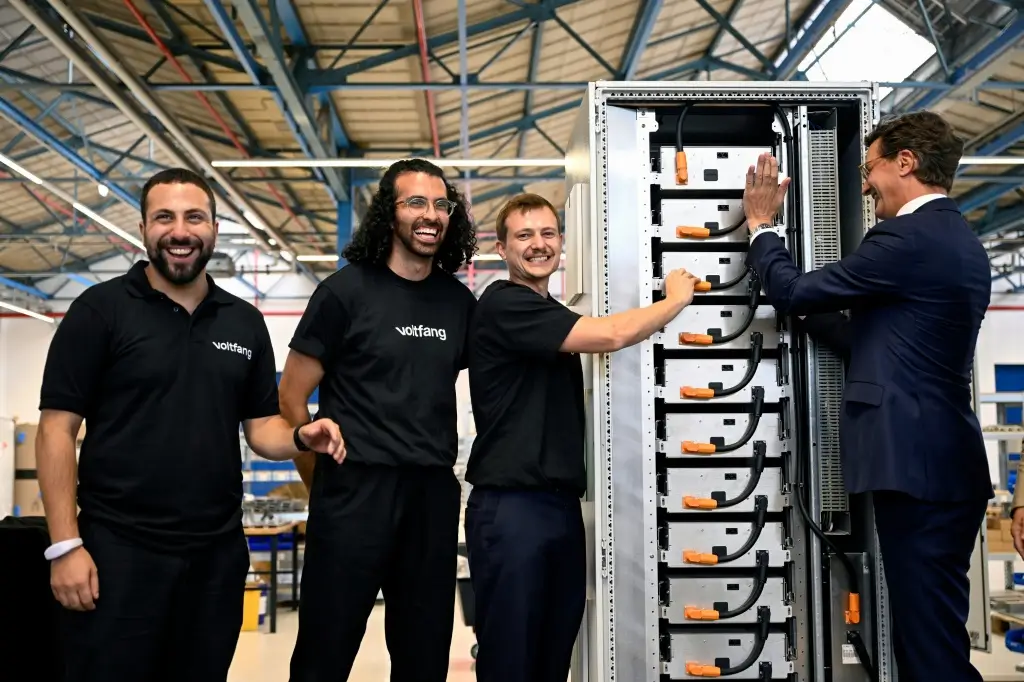
A recycling plant for electric car batteries opened in Aachen on Wednesday. The company Voltfang collects discarded batteries, tests their performance, and, if necessary, installs them in cabinet-like energy storage devices for private households and businesses. One of the first customers is the Aldi supermarket chain. The discounter wants to use the storage units to store excess electricity from PV systems on its roofs for later use.
By the end of 2026, the plant is expected to produce energy storage units with a total capacity of 250 megawatt hours, according to Voltfang. By the end of 2030, output is expected to rise to one gigawatt hour per year. This stored energy would be enough for around 300 households.
“With the opening of Europe's largest second-life battery factory, Voltfang is setting a milestone for a sustainable energy system,” said North Rhine-Westphalia's Minister President Hendrik Wüst (CDU), praising the young company. “Used batteries are being turned into powerful storage systems that increase security of supply and reduce critical dependencies on global supply chains.”
“We want to create European sovereignty in energy supply by enabling the production of energy from renewable sources through storage,” 29-year-old Voltfang CEO David Oudsandji told the AFP news agency. “We can produce a great deal of electricity with solar and wind turbines” and then “store and distribute it decentrally throughout Germany.”
Last year, renewables accounted for almost 60 percent of electricity generation in Germany. The political goal is 80 percent by 2030. However, one existing problem is the question of what happens on days when the sun is not shining and the wind is not blowing. Part of the solution could be significantly higher storage capacities.